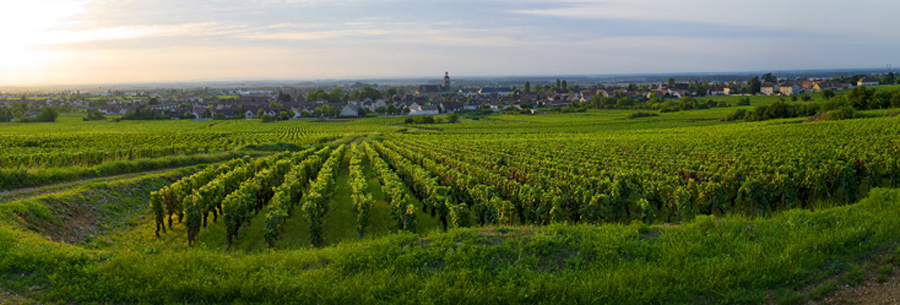The seemingly inexorable price escalation of fine Burgundy, especially when combined with the alarming fall in yields inflicted by recent climatic misfortune, has prompted at least one salutary consequence. Those of us infatuated by Pinot Noir as expressed in the Côte d’Or – that is, Red Burgundy – have been motivated to re-examine our preferences and prejudices and to evaluate anew lesser regarded appellations that may likewise offer the enchantment of fine Red Burgundy.
For many, this process is another reminder that, whatever our conceits to the contrary, our penchant for certain appellations is to some extent a function of fashion. For example, the allure of Vosne-Romanée and Chambolle-Musigny is evident and fully justified; but there are démodé appellations — Corton and Volnay come immediately to mind – that can offer equally compelling if somewhat different takes on Pinot Noir.
One such appellation that has been receiving considerable new focus is Marsannay-la-Côte, the northernmost and most recent (1987) AC in the Côte-de-Nuits. Although Marsannay today enjoys only “secondary” prestige within the Côte d’Or, this was not always the case. The wines of the Clos du Roy vineyard were appropriated by Royal Decree for the tables of Louis XIV and XVI, and several climates enjoyed the equivalent of Grand Cru status well into the nineteenth century. During the Belle Epoque, Marsannay became the dernier cri in Paris cafés. In 1919, Joseph Clair (Dom. Clair-Daü) originated Marsannay Rosé and it was quickly adopted by the smart set in Dijon society.
Indeed, Marsannay (and especially the rosé) was in such high demand in adjacent Dijon, that vignerons sold all their wine locally and enjoyed singular prosperity during the Roaring Twenties (or, as the French say, Les Années Folles). Their success was such that Marsannay proponents perceived a little benefit in promoting their wines during formation of the Appellation system in the early 1930s, and Marsannay was accordingly not included as an AC. When the fashion faded, and as the French economy descended into the abyss of the approaching war, Marsannay went into full eclipse.






No Comments